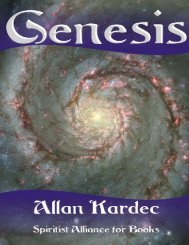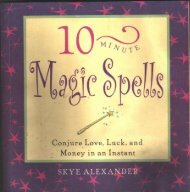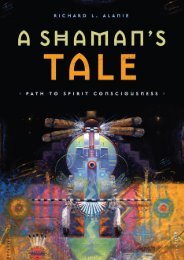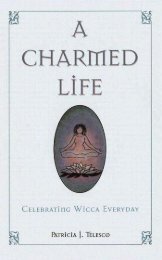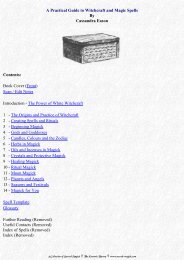Allan Kardec-THE Spirit's Book_ The Principles of Spiritist Doctrine (1989)
Entre los anos 1830 y 1857. Allan Kardec fue un hombre que amaso las mas grandes riquezas de "Material-dado por espiritus" que jamaz se hayan asemblado. El compilo y organizo esta vasta cantidad de informacion que se relaciona y toca con el aqui y hora, cuan inmensos son. Divinas y terrenales leyes , los reinos de los espiritus. El despues y el mas alla. Estos forman sus escrituras y son la fundacion para el " Movimiento Muldial-Internacional Espiritista." El libro de los espiritus. He aqui la version de 1989.
Entre los anos 1830 y 1857. Allan Kardec fue un hombre que amaso las mas grandes riquezas de "Material-dado por espiritus" que jamaz se hayan asemblado. El compilo y organizo esta vasta cantidad de informacion que se relaciona y toca con el aqui y hora, cuan inmensos son. Divinas y terrenales leyes , los reinos de los espiritus. El despues y el mas alla.
Estos forman sus escrituras y son la fundacion para el " Movimiento Muldial-Internacional Espiritista."
El libro de los espiritus. He aqui la version de 1989.
You also want an ePaper? Increase the reach of your titles
YUMPU automatically turns print PDFs into web optimized ePapers that Google loves.
85<br />
<strong>THE</strong> SPIRITS’ BOOK<br />
"Yes; when the machine gets out <strong>of</strong> order, its action ceases. When the body falls ill, life<br />
withdraws from it."<br />
69. Why is death caused more certainly by a lesion <strong>of</strong> the heart than by that <strong>of</strong> any other<br />
organ?<br />
"<strong>The</strong> heart is a life-making machine. But the heart is not the only organ <strong>of</strong> which the lesion<br />
causes death; it is only one <strong>of</strong> the wheels essential to the working <strong>of</strong> the machine."<br />
70. What becomes <strong>of</strong> the matter and the vital principle <strong>of</strong> organic beings after their death?<br />
"<strong>The</strong> inert matter is decomposed, and serves to form other bodies; the vital principle returns<br />
to the general mass <strong>of</strong> the universal fluid."<br />
On the death <strong>of</strong> an organic being, the elements <strong>of</strong> which its body was composed undergo new<br />
combinations that form new beings. <strong>The</strong>se, in their turn, draw the principle <strong>of</strong> life and activity from the<br />
universal source they absorb and assimilate it, and restore it again to that source when they cease to exist.<br />
<strong>The</strong> organs <strong>of</strong> organic beings are, so to say, impregnated with the vital fluid. This fluid gives to every part<br />
<strong>of</strong> an organised being the activity which brings its parts into union after certain lesions, and reestablishes<br />
functions that have been temporarily suspended. But when the elements essential to the play <strong>of</strong> the<br />
organism have been destroyed, or too deeply injured, the vital fluid Is powerless to transmit to them the<br />
movement which constitutes life, and the being dies.<br />
<strong>The</strong> organs <strong>of</strong> a body necessarily react. more or less powerfully. upon one another their reciprocity <strong>of</strong><br />
action results from their harmony among themselves. When from any cause this harmony is destroyed,<br />
their functions cease just as a piece <strong>of</strong> machinery comes to a stand-still when the essential portions <strong>of</strong> its<br />
mechanism get out <strong>of</strong> order, or as a clock stops when its works are worn out by use, accidentally broken,<br />
so that the spring is no longer able to keep it going.<br />
We have an image <strong>of</strong> life and death still more exact in the electric battery. <strong>The</strong> battery, like all natural<br />
bodies, contains electricity in a latent state but the electrical phenomena are only manifested when the<br />
fluid Is set In motion by a special cause. When this movement is superinduced, the battery may be said to<br />
become alive but when the cause <strong>of</strong> the electrical activity ceases, the phenomena cease to occur, and the<br />
battery relapses into a state <strong>of</strong> inertia. Organic bodies may thus be said to be a sort <strong>of</strong> electric battery, in<br />
which the movement <strong>of</strong> the fluid produces the phenomena <strong>of</strong> life, and in which the cessation <strong>of</strong> that<br />
movement produces death.<br />
<strong>The</strong> quantity <strong>of</strong> vital fluid present in organic beings is not the same all; it varies In the various species <strong>of</strong><br />
living beings, and is not constantly the same, either in the same individual or in the individuals <strong>of</strong> the<br />
same species. <strong>The</strong>re are some which may be said to be saturated with it, and others in which it exists in<br />
very small proportions. Hence certain species are endowed with a more active and more tenacious life,<br />
resulting from the superabundance <strong>of</strong> the vital fluid present in their organism.<br />
<strong>The</strong> amount <strong>of</strong> vital fluid contained in a given organism may be exhausted, and may thus become<br />
insufficient for the maintenance <strong>of</strong> life, unless it be renewed by the absorption and assimilation <strong>of</strong> the<br />
substances in which that fluid resides.<br />
<strong>The</strong> vital fluid may be transmitted by one individual to another individual. An organisation in which it<br />
exists more abundantly may impart it to another in which it is deficient; and may thus, in certain cases,<br />
rekindle the vital flame when on the point <strong>of</strong> being extinguished.






